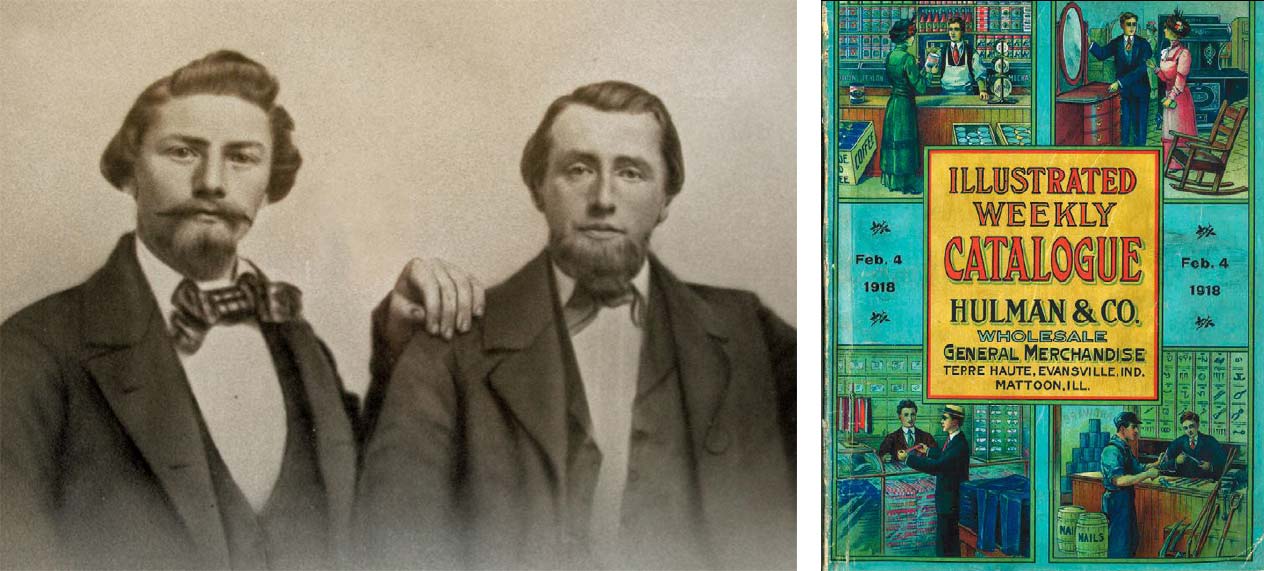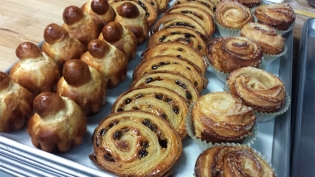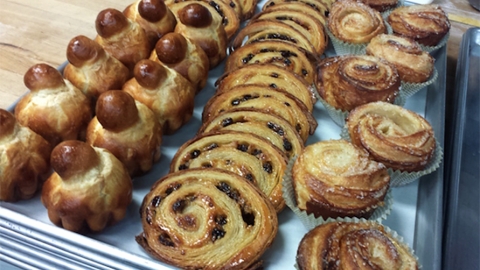The historic link between Clabber Girl and the Indianapolis 500
Gentlemen, start your … biscuits?
Noshing on fluffy baked goods is as American as biscuits and gravy, and here in Indiana it’s as racy as, well, the Indianapolis 500. As it happens, the most important automobile race in the world has some pretty surprising origins that include whiskey, coffee, pencils, washers and … baking powder.
And it all started just west of Indianapolis, about 150 years ago.
Just an hour or so from Indy off of I-70 West sits a small burgh called Terre Haute. Quiet, unassuming and absolutely packed with Indiana history, Terre Haute, which means “high ground” in French, was built on a plateau over the Wabash River around 1818, and is the place where the term “Crossroads of America” was originally coined. The city sits at the intersection of the National Road, the first improved road in the nation that runs west from Maryland to St. Louis, and U.S. Highway 41, which runs south from Michigan, through Florida, across the Everglades, and into Miami. Indeed, in 1818 the two roads seemed to connect nearly all of the “civilized” parts of the country, as it existed in those early days.
Enter Francis Hulman, a young German who escaped the financial hardships of his homeland and made his way to Terre Haute in 1849 looking for an opportunity to make a better life. His chance came in the form of wholesale groceries when he purchased an existing company in 1862 and named it Hulman & Company.
Realizing he was only bound by his own efforts, he consistently wrote his brother Herman, pleading with him to come to America and help make the new company great. Herman finally relented and came to Terre Haute to help make Hulman & Company, and later the Clabber Girl Corporation, a classic tale of the American Dream.
Nestled in the heart of downtown Terre Haute are three buildings where you can tell things are made, and one historic architectural beauty that goes with them. They are the physical manifestation of Francis and Herman’s dreams and hard work. At the corner of the main building is a revolving door that invites and welcomes you into the headquarters of the world-famous Clabber Girl Company.
Sure, you’ve seen cans of Clabber Girl Baking Powder. Who hasn’t? Clabber Girl is ubiquitous in the U.S. as “that stuff that makes your baked goods rise and become fluffy.” (I know ... I should brush up on my science vocabulary.) Stepping inside the Clabber Girl building takes you into another time and place in Indiana history. Stroll the entire (and quite grand) first floor, and you will see exhibit after exhibit of Hulman & Company artifacts, photographs, letters and documents from the last 150 years that open the door to a very unexpected explanation of just how giant the company became and the far-reaching places it has touched; not just in Indiana, but across the globe.
After Francis and Herman Hulman grew their wholesale grocery company, they started to create their own brands to put on the shelves as choices for local grocers in competition to other food and supply companies. The company began to manufacture not only “Clabber Company” baking powder, but also packaged spices, canned and boxed foods, kitchen utensils and more. Ultimately, there were three different brands owned by Hulman & Company with dozens of goods sold alongside others in the weekly printing of the Hulman & Company wholesale catalog.
The Hulman brothers were on make-an-empire fire. Herman purchased a distillery and made Hulman & Baggs bourbon, then built a coffee-roasting plant in the same area and began the famous Rex Roasting Co., which operated until the 1960s and today has a new life in its historic location inside the Hulman building. (More on that later … after all, we’re having a chat about the old days.)
During that growth and production of goods, Clabber Company baking powder became a mainstay for the Hulmans (and for cooks of all kinds). But just what is baking powder and why “Clabber Girl?”
 The Hulman Brothers
The Hulman Brothers
Bread and baked goods have been part of the human experience for over 3,000 years, using yeast as the main vehicle to create a rise. In the 1800s rolled, bakers began to use a mixture of sour milk (clabber) and sodium bicarbonate to raise dough. When the British invented baking soda in 1830, clabber was no longer needed, but was familiar enough to fit into the name of the product that replaced it. Originally called Clabber Company, the name changed to Clabber Girl* in 1923 and the rest is … well, you only have to open your kitchen cabinet to know.
By the 1900s, brothers Hulman had become manufacturing and sales legends. All of that making, processing, canning, roasting, distilling and distributing happened right in the Clabber Girl complex in Terre Haute. Beyond the company, the family had for years personally committed to the progress and support of the city and its people. As new generations of family grew, more Hulmans came on board, including Herman’s son Tony and grandson Tony Jr., and they would take the company into its next, and quietly famous, phase of history.
In the 1940s, as Clabber Girl baking powder became a national and international brand, Hulman and Company looked for ways to promote the product, and the grander the better. It just so happened that there was a racetrack for sale in Indianapolis and Tony Hulman Jr. decided it was just the ticket for promoting his family’s famous baking powder.
Hulman & Company purchased the Indianapolis Motor Speedway in 1945, taking on its serious venue and reputation challenges with the vision and energy Francis and Herman had shown 100 years before. The speedway had been idle and uninhabited since World War II, when racing was forced to stop in effort to support troops and provide needed supplies. The track Hulman found was not much more than a giant weed patch, home to failing structures and rumors that the entire place would fall to a developer’s bulldozer. Tony Jr. went all in and committed Hulman & Company to the rebirth of the Greatest Spectacle in Racing. Today the Indy 500 has success, reputation and history like no other sporting event on the planet—this year it even celebrates its 100th anniversary. And for that you can thank Clabber Girl baking powder.
Spending time at today’s Clabber Girl headquarters in Terre Haute is well worth the trip. Not only do you get to experience the visual history of how the Hulman family has become an icon in American and Indiana history, but you also have the opportunity to see what’s cooking there now. Wind your way through the main part of the building to the café, where light meals and beverages are served (including baked goods, of course!). The dining area is a wonderful mix of the original brick walls from 1892 and some mid-century glass frontage that lets sunlight into the space. You can feel the family vibe here. Employees from the executives to production staff eat, chat and send out energy that make you want to don a white coat and go package some baking powder. The café also hosts a retail shop with both Clabber Girl products and some of Indiana’s finest artisan foods and books. Next to the café area, you’ll find the rebirth of the Rex Roasting Co. with the original roasting room now back in operation. You can watch the master roasters at work and pick up packages of (delicious!) coffee to take home. Finally, check out the Clabber Girl cooking school. Chefs and culinary instructors hold classes regularly in an amphitheater / huge open kitchen setting.
Next time you think about making a quick bread, biscuits or cake, you will probably open a small door in your kitchen and reach for a little white canister which holds the magical powder that makes our taste buds sing just a little. That moment may change a bit now, knowing all the history inside that canister. You may even pop open the top and hear a tiny little roar … perhaps like that of a few dozen 700-horsepower twin-turbo engines on a warm racetrack in May.
Changing the name of a famous company overnight might seem a bit random, but around 1923 the Hulman brothers were faced with a new federal law regarding truth in labeling. Companies could no longer label a food item with something that wasn’t being used as an actual ingredient. Since there was no clabber in Clabber Company baking powder, the name of the product had to be changed. Th e Hulmans refocused and decided to refer to the little girl inside the scene decorating the baking powder can, losing any reference to having any clabber in the can and instead making a new icon … the Clabber Girl.









